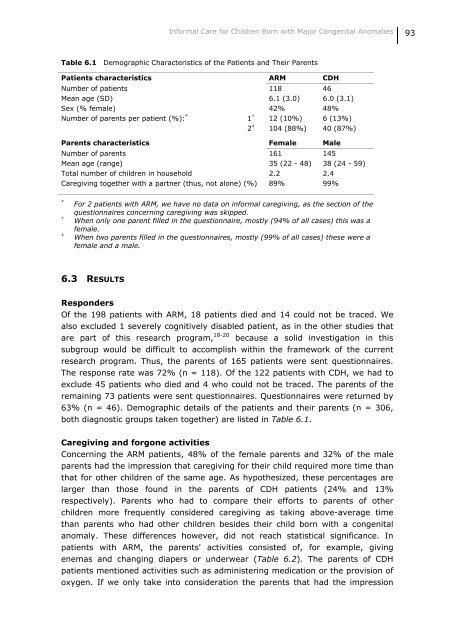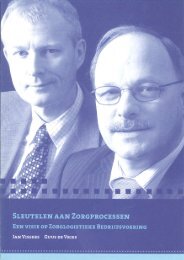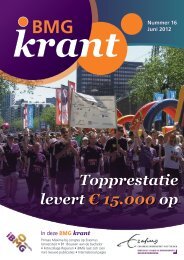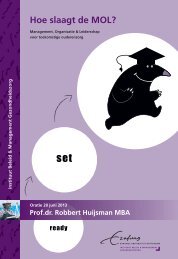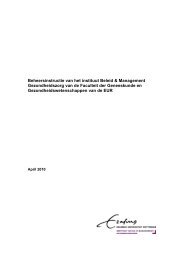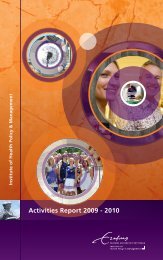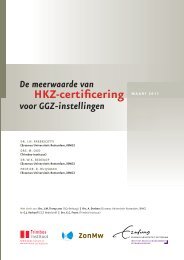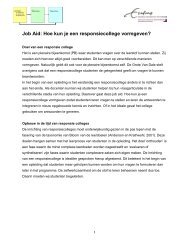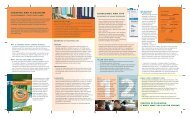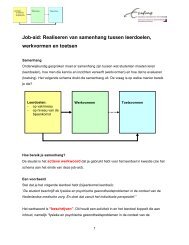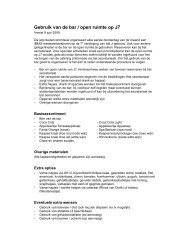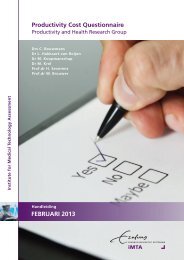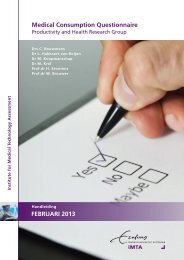Marten J. Poley - Erasmus Universiteit Rotterdam
Marten J. Poley - Erasmus Universiteit Rotterdam
Marten J. Poley - Erasmus Universiteit Rotterdam
- No tags were found...
Create successful ePaper yourself
Turn your PDF publications into a flip-book with our unique Google optimized e-Paper software.
Informal Care for Children Born with Major Congenital Anomalies 93Table 6.1 Demographic Characteristics of the Patients and Their ParentsPatients characteristics ARM CDHNumber of patients 118 46Mean age (SD) 6.1 (3.0) 6.0 (3.1)Sex (% female) 42% 48%Number of parents per patient (%): * 1 † 12 (10%) 6 (13%)2 ‡ 104 (88%) 40 (87%)Parents characteristics Female MaleNumber of parents 161 145Mean age (range) 35 (22 - 48) 38 (24 - 59)Total number of children in household 2.2 2.4Caregiving together with a partner (thus, not alone) (%) 89% 99%*†‡For 2 patients with ARM, we have no data on informal caregiving, as the section of thequestionnaires concerning caregiving was skipped.When only one parent filled in the questionnaire, mostly (94% of all cases) this was afemale.When two parents filled in the questionnaires, mostly (99% of all cases) these were afemale and a male.6.3 RESULTSRespondersOf the 198 patients with ARM, 18 patients died and 14 could not be traced. Wealso excluded 1 severely cognitively disabled patient, as in the other studies thatare part of this research program, 18-20 because a solid investigation in thissubgroup would be difficult to accomplish within the framework of the currentresearch program. Thus, the parents of 165 patients were sent questionnaires.The response rate was 72% (n = 118). Of the 122 patients with CDH, we had toexclude 45 patients who died and 4 who could not be traced. The parents of theremaining 73 patients were sent questionnaires. Questionnaires were returned by63% (n = 46). Demographic details of the patients and their parents (n = 306,both diagnostic groups taken together) are listed in Table 6.1.Caregiving and forgone activitiesConcerning the ARM patients, 48% of the female parents and 32% of the maleparents had the impression that caregiving for their child required more time thanthat for other children of the same age. As hypothesized, these percentages arelarger than those found in the parents of CDH patients (24% and 13%respectively). Parents who had to compare their efforts to parents of otherchildren more frequently considered caregiving as taking above-average timethan parents who had other children besides their child born with a congenitalanomaly. These differences however, did not reach statistical significance. Inpatients with ARM, the parents' activities consisted of, for example, givingenemas and changing diapers or underwear (Table 6.2). The parents of CDHpatients mentioned activities such as administering medication or the provision ofoxygen. If we only take into consideration the parents that had the impression


